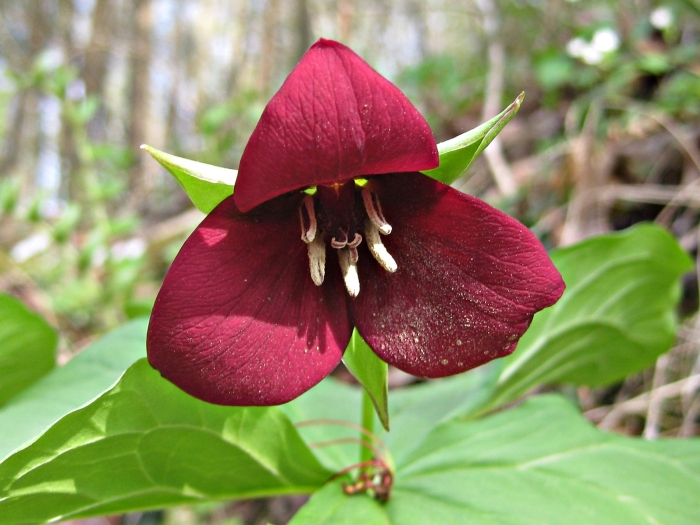Furrowed Wakerobin
(Trillium sulcatum)
Furrowed Wakerobin (Trillium sulcatum)
/
/

Cathie Bird
CC BY-SA 2.0
Image By:
Cathie Bird
Recorded By:
Copyright:
CC BY-SA 2.0
Copyright Notice:
Photo by: Cathie Bird | License Type: CC BY-SA 2.0 | License URL: https://creativecommons.org/licenses/by-sa/2.0/ | Uploader: seabird7 | Publisher: Flickr |















Estimated Native Range
Summary
Trillium sulcatum, commonly known as Furrowed Wakerobin, is a deciduous perennial herb native to rich, moist, deciduous forests and along stream banks in the Southeastern United States, particularly in the Appalachian Mountains. It typically grows to a height of 1-2 feet (0.3-0.6 meters) and a width of 1-3 feet (0.3-0.9 meters). The plant features a single, erect stem topped with a whorl of three large leaves, beneath which a solitary flower blooms in the spring. The flowers come in a variety of colors, including yellow, purple, red, and white, and are quite showy, making them a highlight of the spring woodland garden.
Furrowed Wakerobin is valued for its attractive three-petaled flowers and its ability to add interest to shade gardens. It is often used in woodland gardens, naturalized areas, and as an understory plant in shaded borders. This species prefers part shade but can tolerate deeper shade, and it requires consistently moist soil with good organic content and medium drainage. While generally low-maintenance, it can be slow to establish and may take several years to flower when grown from seed. It is also susceptible to slug damage. Gardeners should note that all parts of this plant are toxic if ingested.CC BY-SA 4.0
Furrowed Wakerobin is valued for its attractive three-petaled flowers and its ability to add interest to shade gardens. It is often used in woodland gardens, naturalized areas, and as an understory plant in shaded borders. This species prefers part shade but can tolerate deeper shade, and it requires consistently moist soil with good organic content and medium drainage. While generally low-maintenance, it can be slow to establish and may take several years to flower when grown from seed. It is also susceptible to slug damage. Gardeners should note that all parts of this plant are toxic if ingested.CC BY-SA 4.0
Plant Description
- Plant Type: Herb
- Height: 1-2 feet
- Width: 1-3 feet
- Growth Rate: Slow
- Flower Color: Yellow, Purple, White
- Flowering Season: Spring
- Leaf Retention: Deciduous
Growth Requirements
- Sun: Part Shade
- Water: Medium
- Drainage: Medium
Common Uses
Bee Garden, Bird Garden, Butterfly Garden, Deer Resistant, Low Maintenance, Showy Flowers
Natural Habitat
Rich, moist, deciduous forests and along stream banks in the Appalachian Mountains
Other Names
Common Names: Southern Red Trillium, Barksdale Trillium
Scientific Names: , Trillium sulcatum, Trillium sulcatum f. albolutescens,
GBIF Accepted Name: Trillium sulcatum T.S.Patrick